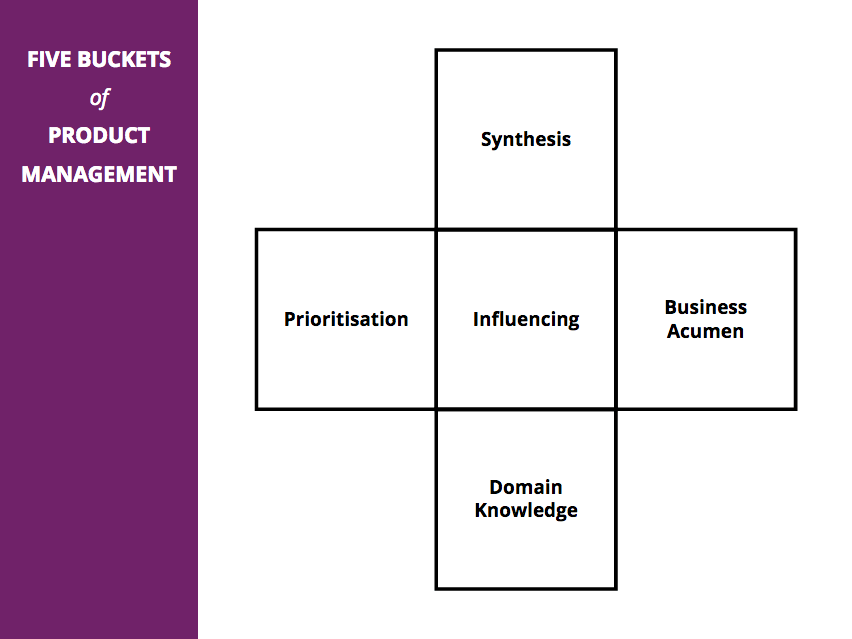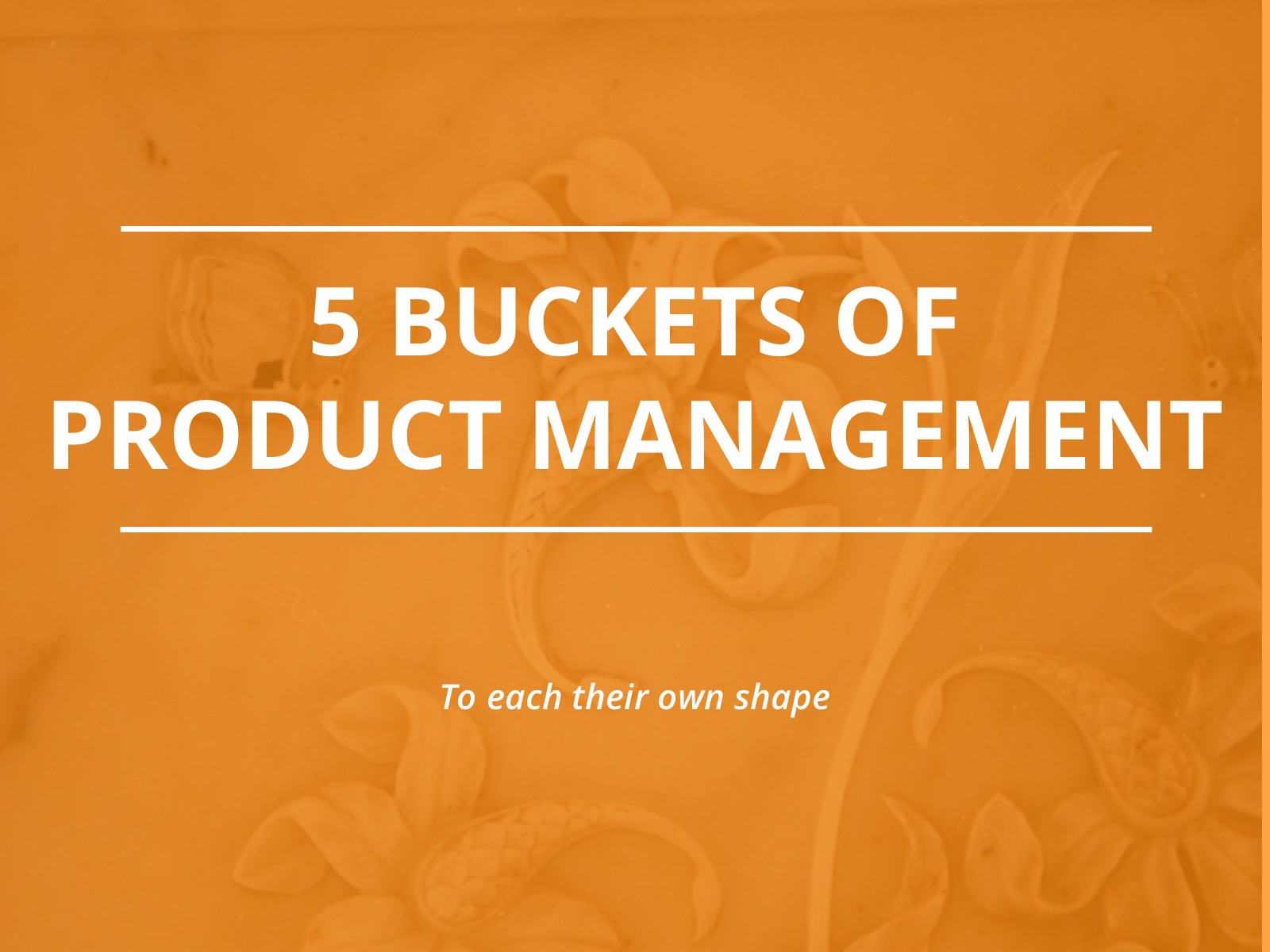Inspired by The Five Competencies of User Experience Design by Steve Psomas, ‘Five Buckets’ – Explained by Jonny Schneider and 5 Buckets of Business Analysis by Jiangmei Kang, I created a version for Product Management.
The 5 Buckets Model for Product Management
The Five Buckets is a model to describe the various capabilities of a Product Manager. This model list out important capabilities and suggests them to be competent in a subset of capabilities based on what their focus / interest is.
The 5 Capabilities of Product Managers (ProMa) identified are:

Influencing
- Rallying opinions around the Product value
- Active listening
- Evangelism
- Articulation of value
- Connect Business, Users, Techies and be their advocate in Product decisions
- Establish common language
- Fill the communication gap
- Stakeholder engagement
- Problem solving
- Decision making
- Conflicts resolution
- Jedi Mind Tricks
- Elevator pitches
- Quips, anecdotes, story telling
- Personal leadership
- CxO level conversations
Synthesis
- Take inputs from various sources and synthesize them into coherent vision
- Build Product Strategy
- Product Design, Innovation, User Research keeping inputs and behaviors in mind
- Work with Business Analysts, Experience Designers, Developers, stakeholders, contributors, builders, consumers, etc.
Prioritization
- Roadmapping
- Track and Manage the Delivery Progress
- Manage and Prioritize the Product Backlog
Business Acumen
- Sustainability of the business based on the product
- Business case for ideas/product/innovations/incremental innovations
- Pricing
- Market scoping
- Market research
- Market size
- Market opportunity
- Product – Organization fit
- Product – Market fit
Domain Knowledge
- Ramp up at needed pace to get sufficient Domain Knowledge
- SME or strong Design background or strong Development background
Some Key Thoughts
- As with other versions, everyone has the combination of two or more capabilities. Nobody can be expert in all five areas.
- Influencing is a basic and key competency for ProMa to be effective.
- Prioritization (roadmapping, tracking, etc) and Synthesis (gather inputs and make sense of conflicting demands) are key day to day activities of a ProMa guided by right Business Acumen (business value of anything that crosses them).
- For situations where Domain Knowledge is important, being an SME helps. Else, as a Generalist, ramping up to have sufficient knowledge of domain works.
Speaker Deck
Thanks to fellow ThoughtWorkers Sachin Sapre, Nagarjun Kandukuru, Kartik Narayanan, Vijayalakshmi K R, Kshama Tikmani and Manish Kumar for the feedbacks at various stages.



It’s a nice model! I would suggest that Customer be placed somewhere more prominently. A product manager needs to be the SME of their customer/user.
Thanks Michael. I had tucked Customer in as one of the inputs that a Product Manager needs to synthesize. But I like you statement that a ProMa needs to be the ‘SME of Customer/User’. Will think how to update the model to call this out.